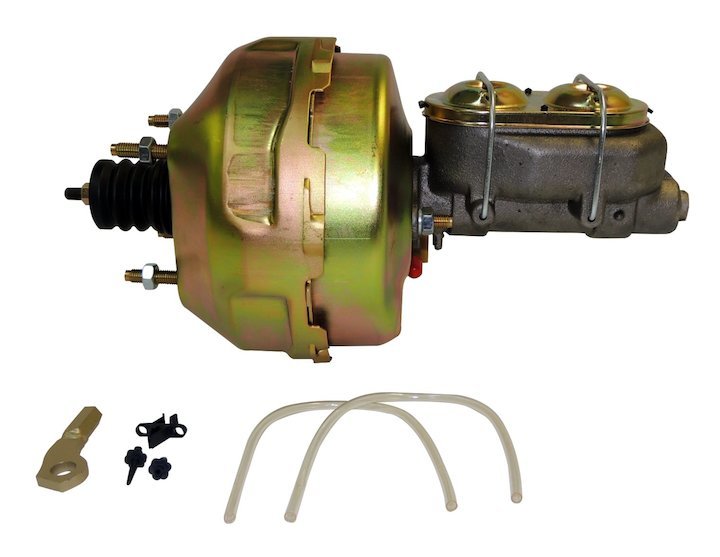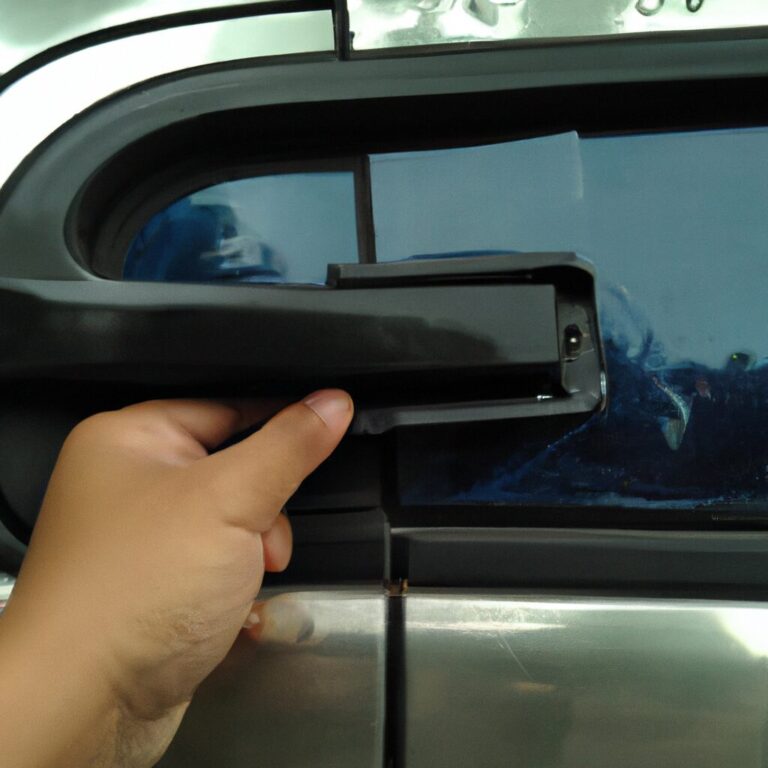What Size Master Cylinder for 4 Wheel Disc Brakes
For 4-wheel disc brakes, the appropriate size master cylinder is typically around 1-inch diameter. Upgrading to a larger master cylinder can improve brake pedal feel and overall braking performance.
When choosing the right size, factors like caliper size, brake line diameter, and brake bias should be considered for optimal braking effectiveness. Ensuring the master cylinder size matches your braking system requirements is essential for safety and performance. By selecting the correct size master cylinder, you can enhance your vehicle’s braking capabilities and overall driving experience.
It’s important to consult with a professional mechanic or brake specialist to determine the best master cylinder size for your specific setup.

Credit: www.quadratec.com
Determining The Correct Master Cylinder Size
When it comes to upgrading to 4-wheel disc brakes, determining the correct size of the master cylinder is crucial for optimal brake performance. The master cylinder is a key component of the braking system, and its size directly impacts brake pedal feel and overall effectiveness. Understanding the factors that determine the correct master cylinder size is essential for a successful brake upgrade.
Factors To Consider
When determining the correct master cylinder size for 4-wheel disc brakes, there are several important factors to consider:
- Brake caliper size
- Number of calipers
- Brake pedal ratio
- Vehicle weight
- Desired brake bias
Understanding Brake Balance
Proper brake balance is crucial for safe and effective braking. An appropriately sized master cylinder helps to ensure balanced braking, preventing wheel lockup or excessive front-to-rear bias. By matching the master cylinder size to the specific demands of the 4-wheel disc brake setup, optimal brake balance can be achieved, enhancing overall vehicle performance and safety.

Credit: www.ebay.com
Calculating The Ideal Master Cylinder Size
4-wheel disc brakes require careful consideration of the master cylinder size.
Determining The Required Piston Bore Diameter
Piston bore diameter is crucial for optimal brake performance.
| Number of Pistons | Required Bore Diameter (inches) |
|---|---|
| 4 pistons | 1.125 |
| 6 pistons | 1.25 |
When calculating the ideal master cylinder size, piston bore diameter is a key factor.
- Choose a bore diameter that matches your brake system’s requirements.
- Ensure proper fluid displacement to all four brake calipers.
Ensuring Each
Caliper receives consistent fluid pressure for balanced braking.
- Calculate total piston area in all calipers for accurate sizing.
- Consider pedal ratio and driver preference for a personalized setup.
Effects Of Incorrect Master Cylinder Size
Incorrect master cylinder size for 4 wheel disc brakes can have significant effects on the braking system’s performance. Understanding these effects is crucial for maintaining safety and optimal brake function.
Insufficient Fluid Volume
An undersized master cylinder may not provide enough fluid volume to each brake caliper, leading to decreased braking efficiency.
Brake Pedal Feel And Response
A mismatched master cylinder can result in a spongy brake pedal feel and delayed brake response, compromising overall braking performance.
Consulting Manufacturer Recommendations
When it comes to determining the right size master cylinder for 4-wheel disc brakes, consulting the manufacturer recommendations is crucial. Manufacturers provide specific guidelines and recommendations based on their expertise and knowledge of their products, ensuring optimal performance and safety for your vehicle.
Master Cylinder Size Guidelines
A master cylinder plays a critical role in the braking system, as it generates the hydraulic pressure needed to activate the brakes. The size of the master cylinder directly impacts the brake pedal feel, overall braking performance, and the distribution of hydraulic force to the four disc brakes.
Manufacturers often specify the master cylinder bore size and piston size based on the vehicle’s weight, tire size, and intended use. These guidelines serve as a starting point for selecting the appropriate master cylinder size for 4-wheel disc brakes, ensuring that the braking system operates efficiently and effectively.
Specific Recommendations For 4-wheel Disc Brakes
When it comes to 4-wheel disc brakes, manufacturers typically provide specific recommendations for master cylinder sizes based on the caliper sizes, rotor diameters, and brake pad materials used. These recommendations are tailored to the specific characteristics of 4-wheel disc brake systems, taking into account factors such as pad wear, heat dissipation, and brake balance.
Consulting the manufacturer’s specifications and recommendations for 4-wheel disc brakes is essential for maintaining the proper brake bias and preventing issues such as excessive front brake bias, rear wheel lockup, or insufficient braking force.
Professional Installation And Testing
When it comes to installing and testing a new master cylinder for your 4 wheel disc brakes, it’s crucial to seek expert advice. Professional installation ensures that the master cylinder is correctly installed and the brake system is functioning optimally. Moreover, performing brake system tests is essential to guarantee the safety and reliability of your vehicle’s braking performance. To help you understand the importance of professional installation and testing, here are two key aspects to consider:
Seeking Expert Advice
Before embarking on the installation of a new master cylinder, it’s highly recommended to seek expert advice from a qualified technician. These professionals possess the knowledge and experience to guide you through the process, ensuring that you select the appropriate master cylinder size for your specific vehicle and braking system. They can also provide valuable insights on compatibility, performance, and potential upgrades for enhanced braking power.
Performing Brake System Tests
Once the master cylinder installation is complete, it’s essential to perform brake system tests to guarantee its proper functionality. Testing the brake system allows for early detection of any anomalies or potential issues. This not only ensures the safety of the vehicle occupants but also prevents any possible damage to the braking components. Some commonly performed tests include:
- Initial bench bleeding: This process involves removing any air bubbles trapped within the master cylinder before installation.
- Pressure testing: This test assesses the hydraulic pressure within the brake system, ensuring consistent pressure distribution among all the wheels.
- Brake pedal feel: This test evaluates the responsiveness and firmness of the brake pedal, ensuring proper engagement with the braking system.
- Brake balance: This test ensures that the braking power is evenly distributed among all four wheels, achieving optimum stopping performance.
By performing these tests, you can be confident that your new master cylinder is operating as intended, providing reliable and efficient braking power. Remember, proper installation and testing are crucial steps to a successful brake system upgrade.

Credit: www.speedwaymotors.com
Frequently Asked Questions For What Size Master Cylinder For 4 Wheel Disc Brakes
What Size Master Cylinder For Disc Brakes?
The size of the master cylinder for disc brakes depends on the size of the brake calipers and the number of pistons they have. It is recommended to consult the manufacturer’s specifications or a professional to determine the correct size for your specific disc brake system.
How Do I Know What Size Master Cylinder I Need?
To determine the right size master cylinder, consider your vehicle’s weight and brake system. Consult an expert for accurate recommendations.
What Size Is The Bore On A Wilwood Master Cylinder For 4 Wheel Disc Brakes?
The bore size on a Wilwood master cylinder for 4 wheel disc brakes varies depending on the specific model.
Can You Use Any Master Cylinder With Disc Brakes?
No, not all master cylinders are compatible with disc brakes. It is essential to use a master cylinder specifically designed for disc brakes to ensure optimal performance and safety.
What Is The Purpose Of A Master Cylinder In Disc Brakes?
The master cylinder in disc brakes converts the pressure applied to the brake pedal into hydraulic pressure, effectively stopping the vehicle.
How Do 4 Wheel Disc Brakes Differ From Standard Brakes?
4 wheel disc brakes provide better stopping power, increased heat dissipation, and improved brake pedal feel compared to standard brakes.
What Size Master Cylinder Do I Need For 4 Wheel Disc Brakes?
The size of the master cylinder for 4 wheel disc brakes depends on factors like vehicle weight and caliper sizes. It is recommended to consult a brake specialist for the appropriate size.
Conclusion
In essence, selecting the right master cylinder size for your 4-wheel disc brakes is crucial for optimal brake performance. Consider factors like vehicle weight, brake caliper piston size, and pedal ratio. Ensuring the right sizing will enhance the safety and efficiency of your braking system, providing smooth and reliable stopping power.


